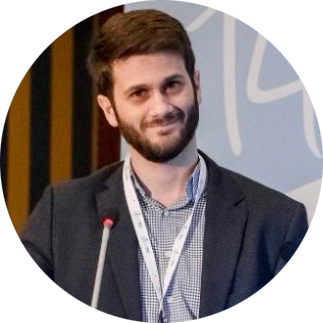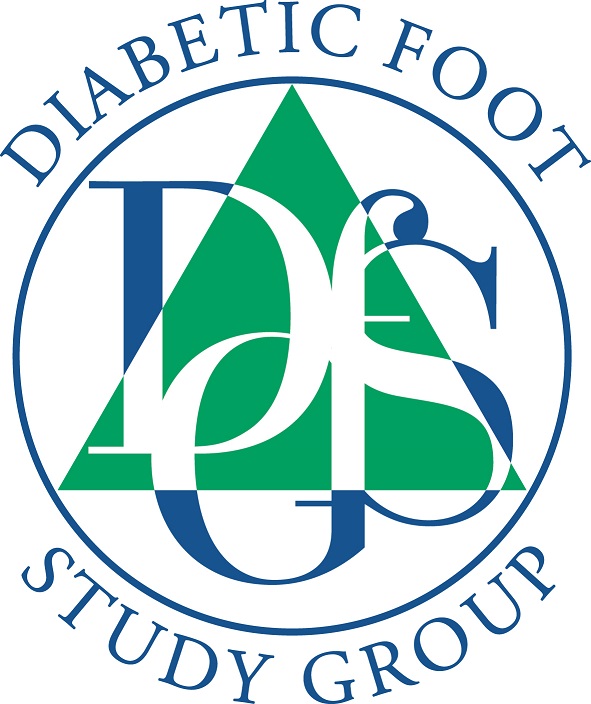Charcot Neuropathic Osteoarthropathy of the Foot in Diabetes: monitoring of evolution and resolution
Background of the project
Charcot Neuropathic Osteoarthropathy is a potentially limb threatening condition with bone and joint destruction that mainly affects patients with diabetes and neuropathy. Excessive local inflammation due to repeated injury or trauma that results in abundant local bone resorption is thought to play a key role in Charcot pathogenesis.
The diagnosis of Charcot Neuropathic Osteoarthropathy is based on clinical manifestation and imaging studies (plain X-rays, bone scan, Magnetic Resonance Imaging). In terms of management, immediate off-loading is recommended, while surgery is reserved for chronic cases with irreparable abnormalities and/or joint instability or severe foot deformity failing a conservative approach.
However, data regarding the most appropriate monitoring technique to assess for length or treatment and disease resolutions limited.
Who are we?
The DFSG initiated a group of early career academics/clinicians/scientists who will be supported by a group of multi-disciplinary mentors with a profound understanding of the Charcot Neuropathic Osteoarthropathy. This group will work on the field of “Charcot Neuropathic Osteoarthropathy of the Foot in Diabetes: monitoring of evolution and resolution”. The overarching aim of the group is to explore the evolution and resolution of acute Charcot foot in diabetes.
In May 2021 seven applicants from across Europe were selected, and the first meeting of the young scientist and mentors took place in July 2021.
Mentors of the project
United Kingdom
Poland
Czech Republic
Germany
United Kingdom
Meet the young scientists

Anastasios Tentolouris
PRESENT POSITION: Resident in Internal Medicine, Clinical and Research Fellow in Diabetes.
EDUCATION AND BACKGROUND:
M.D. Medicine. Medical School, National and Kapodistrian University of Athens, Greece, 2016.
M.Sc. Diabetes Mellitus and Obesity. First Department of Propaedeutic Internal Medicine, Medical School, National and Kapodistrian University of Athens, Greece, 2018.
Ph.D. Diabetes Research. First Department of Propaedeutic Internal Medicine, Medical School, National and Kapodistrian University of Athens, Greece, 2020.

Prof. Dr. Aroa Tardáguila García.
PRESENT POSITION: Full Professor at Faculty of Nursing, Physiotherapy and Podiatry, Universidad Complutense de Madrid. Professor at Diabetic Foot Masters at Universidad Complutense de Madrid. Research assistant, Diabetic Foot Unit at Universidad Complutense de Madrid. Madrid, Spain.
EDUCATION AND BACKGROUND:
Podiatry degree, Universidad Complutense de Madrid, 2010.
Master’s degree in Health Care Research, Universidad Complutense de Madrid, 2012.
PhD in Health Care, Universidad Complutense de Madrid, 2020.
Diabetic Foot Unit Resident, Universidad Complutense de Madrid, from 2010 to 2012.
Predoctoral Researcher at Diabetic Foot Unit, Universidad Complutense de Madrid, from 2016 to 2020.

Catherine Gooday
PRESENT POSITION: Principal Podiatrist, Elsie Bertram Diabetes Centre, Norfolk & Norwich University Hospitals NHS Foundation Trust, UK
EDUCATION AND BACKGROUND:
-Catherine Gooday graduated as a podiatrist from the University of Brighton in 1996. She has been the Principal Podiatrist within the Elsie Bertram Diabetes Centre, at the Norfolk and Norwich University Hospitals NHS Foundation Trust, England, since 2001.
-In 2016 she was awarded a National Institute for Health Research (NIHR) Clinical Doctoral Fellowship to study for a PhD. The focus of her PhD is on defining the outcome measures of Charcot neuroarthropathy.

Prof. Dr. Irene Sanz Corbalán
PRESENT POSITION: Full Professor at Faculty of Nursing, Physiotherapy and Podiatry, Universidad Complutense de Madrid. Professor at Diabetic Foot Masters at Universidad de Madrid. Research assistant, Diabetic Foot Unit at Universidad Complutense de Madrid. Madrid, Spain.
EDUCATION AND BACKGROUND:
Podiatry degree, Universidad Complutense de Madrid, 2007.
Master’s degree in Health Care Research, Universidad Complutense de Madrid, 2012.
PhD in Health Care, Universidad Complutense de Madrid, 2016.
Diabetic Foot Unit Resident, Universidad Complutense de Madrid, from 2008 to 2011.
Predoctoral Researcher at Diabetic Foot Unit, Universidad Complutense de Madrid, from 2012 to 2016.

Ms. Jennifer A. Pallin
PRESENT POSITION: PhD Scholar, School of Public Health, University College Cork, Ireland.
EDUCATION AND BACKGROUND:
HRB-funded PhD Scholar, School of Public Health, University College Cork, Cork, Ireland; SPHeRE programme and DFD PRIMO programme, ongoing.
2018: Master of Public Health (MPH), University College Dublin, Ireland, 2018.
2015: B.Sc. (Hons) Podiatry, National University of Ireland Galway, Ireland, 2015.

Nichola Renwick
PRESENT POSITION: Senior Research Associate, University of Portsmouth, UK
EDUCATION AND BACKGROUND:
PhD: Biomechanics of midfoot Charcot neuroarthropathy in people with diabetes. Glasgow Caledonian University, UK, 2022
MSc Biomedical Engineering, University of Strathclyde, UK, 2016
BSc (Hons) Anatomy and Forensic Anthropology, University of Dundee, UK, 2012

Rasmus Bo Jansen
PRESENT POSITION: MD. Fellowship position in endocrinology, Dept. of Endocrinology, Rigshospitalet, Copenhagen, Denmark.
EDUCATION AND BACKGROUND:
Master’s degree in medicine, graduated from Copenhagen University, 2011.
Ph.D. Degree in internal medicine, 2017.
Currently undergoing specialist training as an endocrinologist.
DFSG research group: “Charcot Neuropathic Osteoarthropathy of the Foot in Diabetes: monitoring of evolution and resolution”
The Executive Committee of Diabetic Foot Study Group announces search for new members to join a research group:
We would like to invite young academics/clinicians/scientists to join the existing Charcot Neuropathic Osteoarthropathy young scientists group
Background:
Charcot Neuropathic Osteoarthropathy of the Foot in Diabetes is known to be a severe complication of the disease. Although a number of circulating blood cytokines and inflammatory markers have been described, how these can be used to monitor progress of resolution, and how these correlate with changes seen on imaging is uncertain. The gold standard of management is non-removable offloading of the affected limb, but as resolution of the acute Charcot is poorly defined, uncertainty remains about the length of treatment.
Current Call:
The DFSG has previously formed a group of young academics/clinicians/scientists to work on the field of “Charcot Neuropathic Osteoarthropathy of the Foot in Diabetes: monitoring of evolution and resolution” with the aim to develop a grant application to investigate the above.
This group has been highly successful in their work, but due to changing membership the opportunity arises for some new members.
Project Vision:
Once applicants have been selected, the group will meet to discuss ongoing and future planned projects to further define the evolution and resolution of an acute Charcot foot in Diabetes.
The value-based agenda will be used to define potential markers for future grant application to test the hypotheses developed
Application Process:
Successful applicants will be supported by a group of multi-disciplinary mentors with a profound understanding of the diabetic foot. If you are a young academic/clinician/scientist with an interest in the research project “Charcot Neuropathic Osteoarthropathy of the Foot in Diabetes: monitoring of evolution and resolution” and scientific experience we invite you to apply for this group.
Applications can be sent to: Fran Game and Anna Trocha at dfsg@dfsg.org
The application should include:
- Short CV
- Contact details (Full name, phone number, email and affiliation)
- Short motivation
Closing Date: 6th June, 23.59 CEST
Successful applicants will be notified in August 2024 and the first meeting of the young scientist and their mentors will take place during DFSG 2024.
Contact the research group
OUR
Obectives
- Organize workshops and webinars
- Disseminate skin ultrasound among physicians
- Collect and develop educational material
- Build an educational online platform
- Establish a member organization
HFUS
Introduction to High Frequency Ultrasonography
HFUS is a recently introduced diagnostic technique, which finds several applicationsin diverse clinical fields. It uses a range of frequencies higher than 20 MHz and provides a high spatial resolution, making this technique suitable for several clinical applications, such as imaging of skin, blood vessels, musculoskeletal anatomy, oral mucosa, and small parts.
Considering the many applications of HFUS in dermatology, we want to highlight its suitability in clinical evaluation of melanocytic lesions and non-proliferative diseases, which includes lichen sclerosus, morphea, sarcoidosis, hidradenitis suppurativa, chronic and acute wounds.
Moreover, HFUS may be useful in the evaluation of micro-vascularity, skin thickness modifications and skin structures modifications in systemic diseases (e.g., diabetes and Sjogren disease).
